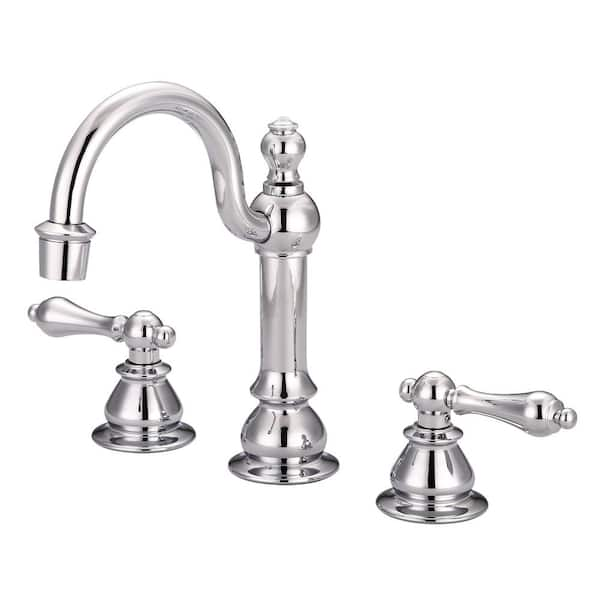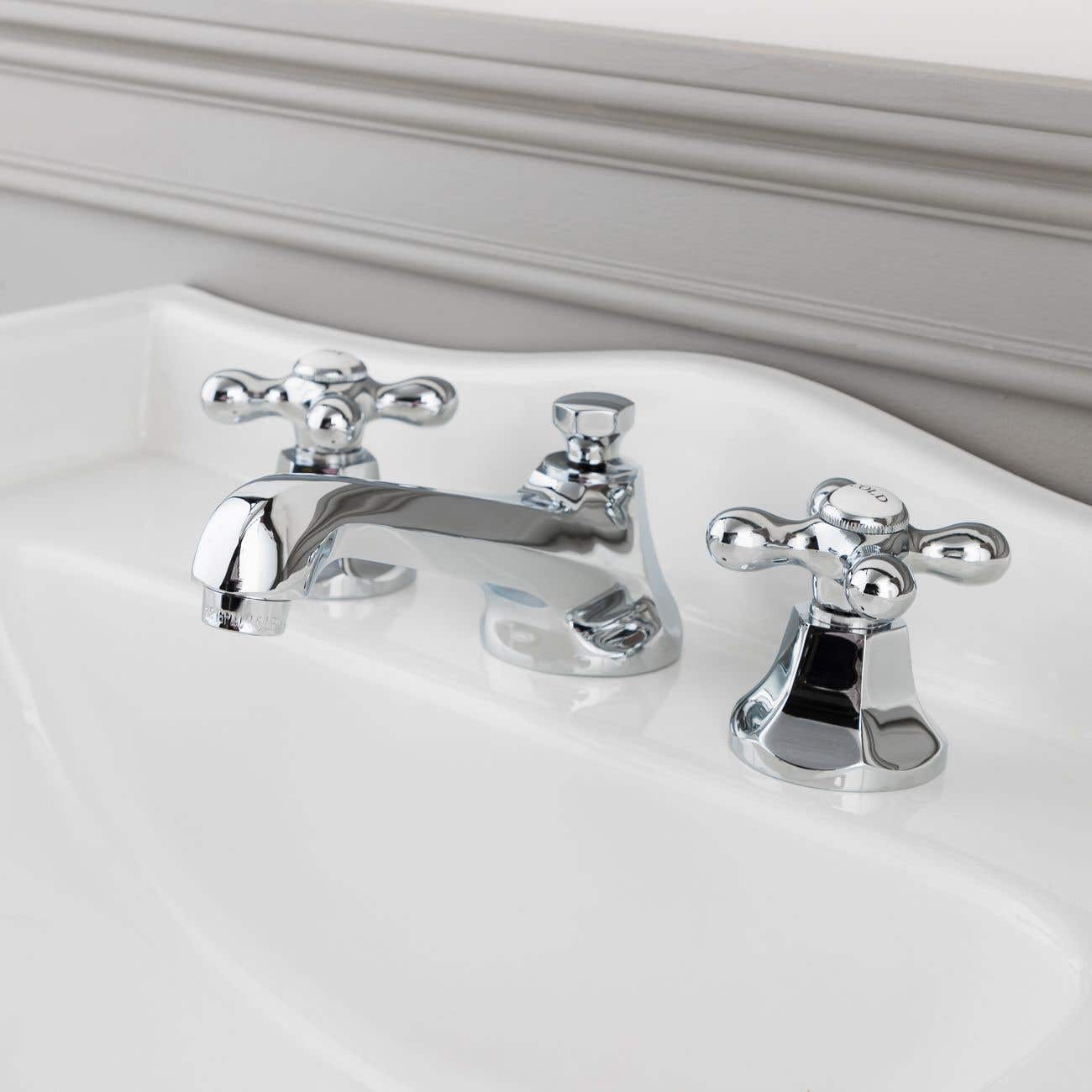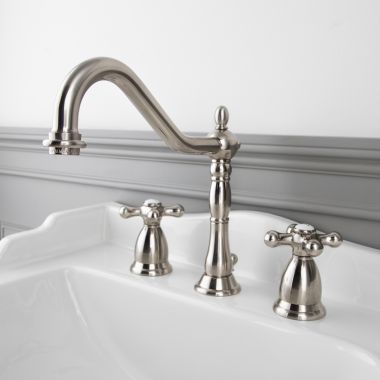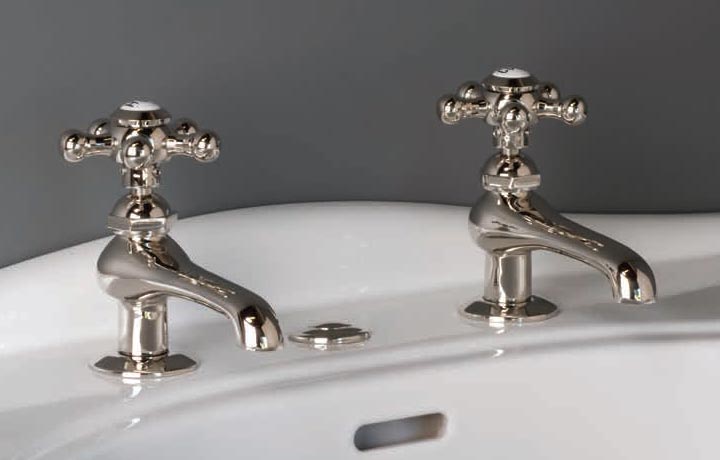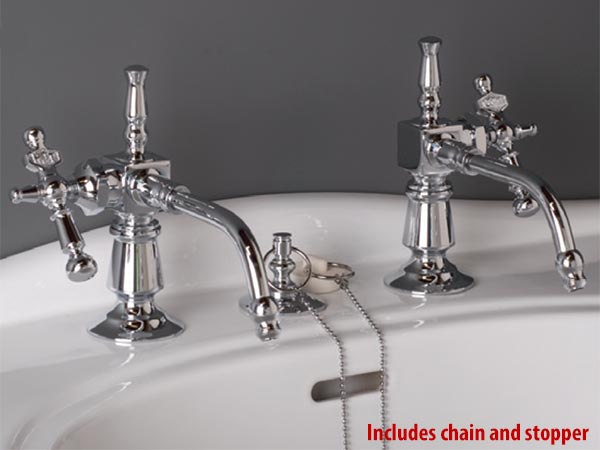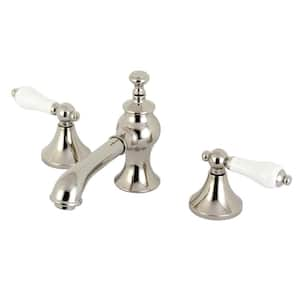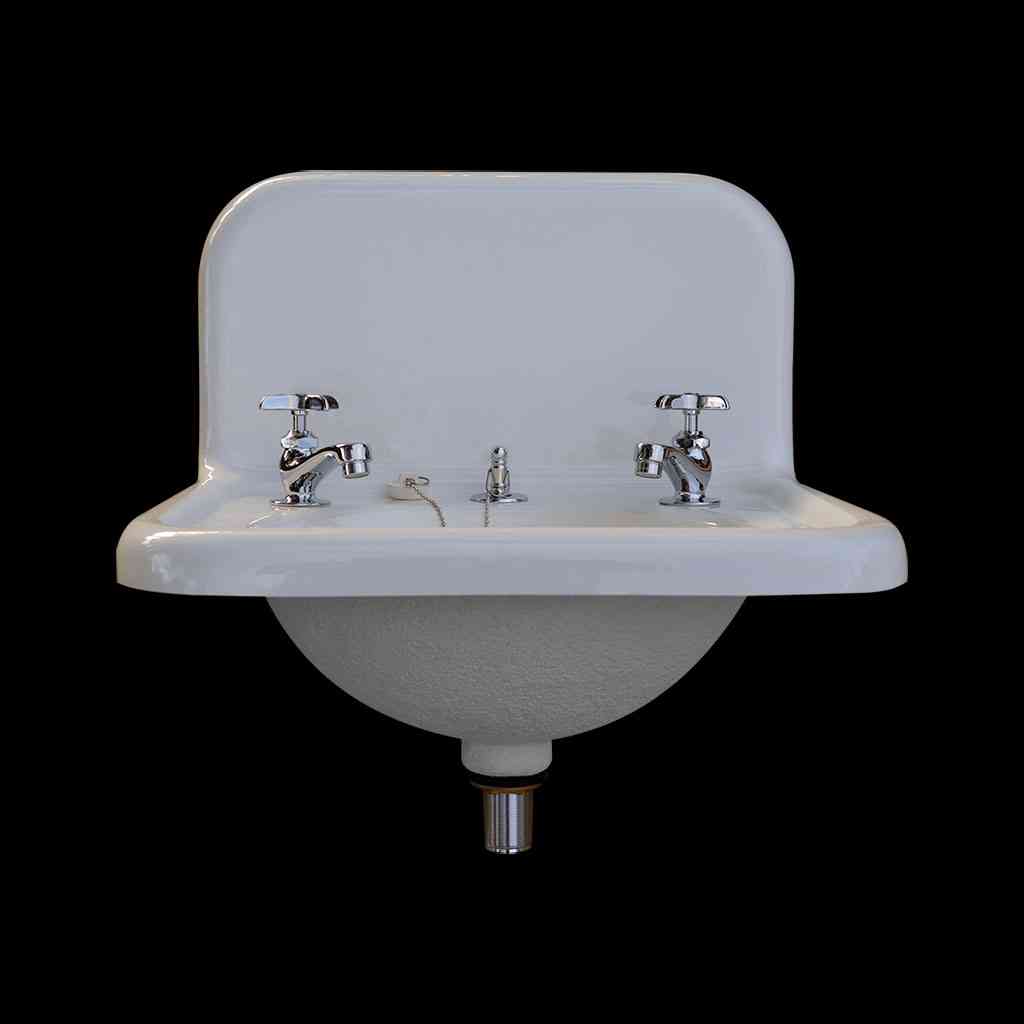The Evolution of Reproduction Bathroom Faucets
Bathroom faucets have come a long way in terms of design, functionality, and aesthetics. In this article, we will explore the evolution of reproduction bathroom faucets, tracing their journey from the past to the present. Let’s talk about the different styles that have emerged over time and highlight the technological advancements that have revolutionized the industry.
- Classic Designs and Vintage Charm: Reproduction bathroom faucets often draw inspiration from classic designs of the past. These faucets pay homage to timeless styles such as Victorian, Art Deco, and Retro. With intricate detailing, elegant curves, and ornate handles, these faucets bring a touch of vintage charm to modern bathrooms. While the exteriors may reflect the past, the internal mechanisms are equipped with modern technology for enhanced performance and durability.
- Contemporary Elegance and Minimalism: In recent years, reproduction bathroom faucets have also embraced contemporary design trends. Clean lines, sleek finishes, and minimalist forms have gained popularity among homeowners seeking a more modern aesthetic. Manufacturers have responded by creating reproduction faucets that seamlessly blend style and functionality. These faucets often feature innovative water-saving technologies and easy-to-use controls, making them perfect for the modern bathroom.
- Material Choices and Durability: Another aspect of the evolution of reproduction bathroom faucets is the wide range of materials available. In the past, brass was the go-to material for faucets due to its durability. However, advancements in manufacturing processes have opened up a plethora of options. Nowadays, reproduction faucets can be found in stainless steel, bronze, chrome, and even innovative materials like brushed nickel and matte black. These materials not only offer durability but also add a touch of elegance and uniqueness to the bathroom space.
- Customization and Personalization: One exciting development in reproduction bathroom faucets is the ability to customize and personalize the fixtures. Manufacturers now offer a variety of finishes, colors, and handle options to suit individual preferences. Whether you prefer a polished chrome finish or a matte black one, a single lever handle or a cross handle, there is a reproduction faucet that can be tailored to your taste. This level of customization allows homeowners to create a bathroom space that reflects their unique style and personality.
- Eco-Friendly Innovations: As environmental consciousness grows, so does the demand for eco-friendly bathroom fixtures. The evolution of reproduction bathroom faucets has seen the integration of water-saving technologies such as aerators and flow restrictors. These features help conserve water without compromising on performance. Additionally, some reproduction faucets now come with touchless sensors, allowing for hygienic and water-efficient operation.

Choosing the Perfect Reproduction Bathroom Faucet
When it comes to choosing a reproduction bathroom faucet, there are several factors to consider. Let’s discuss the key elements that should guide your decision-making process. From style and functionality to materials and finishes, we will help you navigate through the myriad of options available, ensuring that you find the perfect reproduction faucet for your bathroom.
- Style: Reflecting Your Personal Taste: The style of the reproduction bathroom faucet plays a crucial role in the overall aesthetic of your bathroom. Consider the existing decor and theme of your bathroom and choose a faucet that complements it. If you have a traditional bathroom, faucets with classic designs and vintage finishes will be an ideal choice. For modern bathrooms, sleek and minimalist faucets in contemporary finishes like brushed nickel or matte black will create a seamless look.
- Functionality: Meeting Your Needs: Functionality is another important aspect to consider when selecting a reproduction bathroom faucet. Think about how you use your bathroom and what features would make your life easier. Do you prefer a single lever handle for easy temperature control? Or do you prefer separate handles for hot and cold water? Would you benefit from a pull-out spray nozzle for added versatility? Pay attention to these functional aspects to ensure that the faucet meets your specific needs.
- Materials and Finishes: Durability and Style: The choice of materials and finishes for your reproduction bathroom faucet can significantly impact its durability and style. Brass has long been a popular choice due to its strength and resistance to corrosion. However, modern reproduction faucets also come in stainless steel, bronze, and other high-quality materials. Consider the finish options as well, such as polished chrome, brushed nickel, or oil-rubbed bronze, and choose the one that best complements your bathroom decor.
- Installation and Configuration: Compatibility with Your Bathroom: Before making a final decision, it’s essential to consider the practical aspects of installation and configuration. Measure the existing sink or countertop to ensure compatibility with the reproduction faucet you choose. Consider the number of holes required for installation, whether it’s a single-hole, three-hole, or wall-mounted faucet. Additionally, think about the height and reach of the faucet spout to ensure it will provide adequate clearance and functionality in your bathroom space.
- Budget Considerations: Balancing Quality and Affordability: Finally, it’s crucial to establish a budget for your reproduction bathroom faucet. While it’s tempting to go for the most expensive option, remember that quality doesn’t always have to come at an exorbitant price. Research different brands and models read customer reviews, and compare prices to find a reproduction faucet that strikes the right balance between quality and affordability. Set a budget that you’re comfortable with and stick to it to ensure a satisfying purchase.
Installing Reproduction Bathroom Faucets
Installing a reproduction bathroom faucet can be a rewarding DIY project that adds a touch of elegance to your bathroom. Below we provide you with a step-by-step guide to help you successfully install your reproduction bathroom faucet. From gathering the necessary tools to connecting the water supply lines, we will cover all the essential steps to ensure a smooth installation process.
Gather the Tools and Materials: Before you begin the installation process, gather all the necessary tools and materials. You will typically need an adjustable wrench, pliers, a basin wrench, plumber’s tape, a bucket or towel, and a tube of silicone sealant. Make sure you have these items on hand to avoid interruptions during the installation.
Turn Off the Water Supply: To begin the installation, turn off the water supply to the bathroom. Locate the shut-off valves under the sink and turn them clockwise until they are fully closed. Once the water supply is turned off, open the faucet to relieve any remaining water pressure.
Remove the Old Faucet: Next, remove the old faucet by loosening the nuts that secure it to the sink or countertop using a basin wrench or pliers. Disconnect the water supply lines from the faucet using an adjustable wrench. Carefully lift the old faucet off the sink or countertop and clean the area to prepare for the installation of the new reproduction faucet.
Install the New Faucet: Following the manufacturer’s instructions, position the new reproduction faucet on the sink or countertop. Make sure the faucet is properly aligned and centered. From underneath the sink, thread the nuts onto the faucet tailpieces and tighten them with a basin wrench or pliers. Take care not to overtighten, as it could damage the faucet or sink.
Connect the Water Supply Lines: With the faucet securely in place, connect the water supply lines. Apply the plumber’s tape to the threaded ends of the supply line connectors to ensure a watertight seal. Attach one end of the supply lines to the corresponding hot and cold water shut-off valves under the sink. Tighten the connections using an adjustable wrench, taking care not to overtighten.
Test for Leaks and Finish the Installation: After connecting the water supply lines, it’s time to test for leaks. Slowly turn on the water supply valves and check for any signs of leaks around the connections. If you notice any leaks, tighten the connections further or consider using a plumber’s tape to create a better seal. Once you are confident that there are no leaks, clean up any excess water and finish the installation by applying a thin bead of silicone sealant around the base of the faucet to create a watertight seal.
Maintaining Reproduction Bathroom Faucets
To keep your reproduction bathroom faucet looking and functioning at its best, proper maintenance is essential. Below we provide you with tips and tricks to help you maintain your reproduction faucet for long-lasting beauty and performance. From regular cleaning routines to addressing common issues, we will cover all the necessary steps to ensure your faucet stays in top condition.
Regular Cleaning: Regular cleaning is crucial to maintain the appearance of your reproduction bathroom faucet. Use a soft cloth or sponge and a mild, non-abrasive cleaner to wipe down the faucet regularly. Avoid using harsh chemicals or abrasive scrubbers, as they can damage the finish. Pay special attention to areas prone to water spots or soap residue, such as the spout and handles. Rinse thoroughly with water and dry with a soft cloth to prevent water spots.
Addressing Hard Water Deposits: If you live in an area with hard water, mineral deposits can build up on your reproduction faucet over time. To remove these deposits, soak a cloth or paper towel in white vinegar and wrap it around the affected areas. Let it sit for a few hours or overnight, then gently scrub with a soft brush or toothbrush to remove the deposits. Rinse thoroughly with water and dry with a soft cloth.
Preventing Scratches and Damage: To prevent scratches and damage to the finish of your reproduction bathroom faucet, avoid using abrasive cleaners or scrubbers. Instead, opt for non-abrasive cleaners and soft cloths or sponges. Be cautious when placing heavy objects near the faucet, as they can cause dents or scratches. Consider using coasters or mats to protect the faucet surface from potential damage.
Addressing Dripping or Leaking: If you notice your reproduction faucet dripping or leaking, it’s important to address the issue promptly. Dripping water can lead to water wastage and potential damage to your bathroom fixtures. Most often, dripping or leaking faucets are caused by worn-out internal components such as O-rings, washers, or cartridges. Consult the manufacturer’s instructions or contact a professional plumber to guide you through the process of replacing these components.
Maintaining the Finish: To maintain the finish of your reproduction bathroom faucet, avoid using harsh chemicals or abrasive cleaners. Stick to mild, non-abrasive cleaners and soft cloths or sponges for routine cleaning. If you need to remove stubborn stains or fingerprints, use a gentle cleaner specifically formulated for the faucet’s finish. Always rinse thoroughly with water and dry with a soft cloth to prevent water spots or mineral deposits.
Innovative Designs and Technologies on the Horizon
As technology continues to advance, the future of reproduction bathroom faucets holds exciting possibilities. Let’s explore the innovative designs and technologies that are on the horizon for reproduction bathroom faucets. From smart features to sustainable solutions, these advancements will revolutionize the way we interact with and experience our faucets.
Smart Faucets for Enhanced Convenience: One of the most significant developments in reproduction bathroom faucets is the integration of smart technology. Imagine being able to control your faucet with voice commands or through a smartphone app. Smart faucets equipped with motion sensors can detect when you approach and automatically turn on the water, providing hands-free convenience and helping to conserve water. Some smart faucets even offer personalized presets for water temperature and flow, allowing you to achieve your preferred settings with a simple command.
Water-Saving Innovations for Sustainability: With increasing awareness of water conservation, reproduction bathroom faucets are embracing innovative technologies to help reduce water usage. Water-saving features such as aerators and flow restrictors are already in use, but future advancements will take sustainability even further. Expect to see faucets equipped with advanced sensors that can detect when hands are under the spout, delivering just the right amount of water needed for washing. These technologies will play a significant role in creating more sustainable and eco-friendly bathroom environments.
Antibacterial and Hygienic Solutions: Maintaining proper hygiene in the bathroom is essential, and reproduction faucets of the future will incorporate features to address this concern. Antimicrobial coatings and materials will be used to inhibit the growth of bacteria and germs on faucet surfaces, ensuring better hygiene and reducing the risk of cross-contamination. Additionally, touchless operation through motion sensors or voice commands will further minimize contact and improve overall cleanliness.
Innovative Materials and Finishes: The future of reproduction bathroom faucets will bring a wider range of materials and finishes to choose from. While traditional materials like brass and stainless steel will remain popular, expect to see the introduction of new materials that offer enhanced durability and aesthetic appeal. Innovative finishes, such as self-healing coatings that can repair minor scratches or damages, will also become more prevalent, ensuring that your reproduction faucet maintains its beauty for years to come.
Customization and Personalization: In the future, reproduction bathroom faucets will offer even greater options for customization and personalization. Manufacturers will provide a vast array of finishes, colors, and styles to suit individual preferences and bathroom aesthetics. Customizable handles, spouts, and even water flow patterns will allow homeowners to create truly unique and personalized faucet designs that reflect their style.
Victorian Widespread Bathroom Faucet-Porcelain Lever Handles
Old-Fashioned Style Basin Taps for Bathroom Sinks
Old Fashioned Basin Tap Faucets
Vintage – Bathroom Sink Faucets – Bathroom Faucets – The Home Depot
Vintage Bathroom Sink Faucets at Lowes.com
Single Basin High Back Sink With Faucet u0026 Drain – Model #BS2018
Related Posts:
- Moen Chrome Single Handle Bathroom Faucet
- Aqua Plumb Bathroom Faucet
- Bathroom Faucet Aerator Removal
- Moen Cross Handle Bathroom Faucet
- Long Spout Bathroom Faucet
- Menards Bathroom Faucets Bronze
- Moen 8 Widespread Bathroom Faucet
- Old Fashioned Bathroom Faucet Handles
- How Much Does It Cost To Replace Bathroom Faucet
- Bandini Bathroom Faucets
